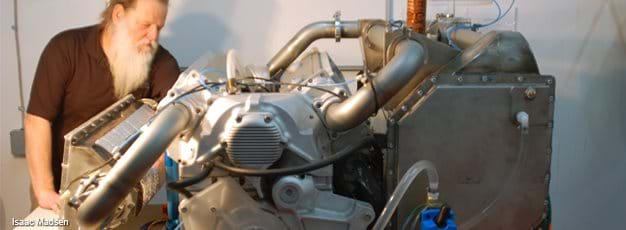Grassroots Innovation Widespread in Rural Areas and Concentrated in Manufacturing

Innovation can contribute to dynamic and resilient local economies by introducing new goods, services, or ways of doing business that add value to benefit consumers. Research on rural innovation has largely focused on increases in agricultural productivity—leaving the potential contributions of the rural nonfarm economy only thinly studied. Many researchers assume that innovation outside of agriculture is overwhelmingly an urban phenomenon, as per capita patent rates are six times higher than those in rural areas. However, many advances will not result in a patent; these grassroots innovations arise the way they always have: from individuals finding creative solutions to problems.
In order to assess the innovative capacity of rural areas, ERS administered the Rural Establishment Innovation Survey (REIS) in 2014—the first nationally representative establishment survey of self-reported innovation. REIS measures the extent of innovation in tradable industries outside of agriculture that may provide products for regional or international trade. It also compares urban (metro) and rural (nonmetro) innovation rates in these industries and allows researchers to assess the impact of innovation on local economic performance.
One challenge in trying to measure innovation is that most establishments consider themselves innovative. Thus, a majority responded affirmatively to the question “Did your business introduce any new or significantly improved products over the past 3 years?” To produce a measure of substantive innovation—the pursuit of incremental and more far-ranging innovation likely to add value or increase market share—REIS asks a number of additional questions. For example, the survey asks whether the establishment has produced intellectual property worth protecting or whether it recognizes the value of failed innovation initiatives.
Using a more comprehensive innovation measure, REIS found 23 percent of rural establishments and 31 percent of urban establishments to be substantive innovators. Findings from REIS also suggest that rural establishments in some industries are as likely to be substantive innovators as their urban peers. The similarity in innovation rates across manufacturing industries is particularly striking given presumed advantages of deeper supplier, customer, and information networks in urban areas.
However, urban innovation advantages appear in the Services sector, which includes tradable industries such as wholesale trade, information, and financial services. This may reflect differences in the level of competition facing tradable services in rural and urban areas. Businesses providing tradable services in urban areas are likely to have more local competitors, which are more likely to induce innovation, than their rural peers.
Innovation in the Rural Nonfarm Economy: Its Effect on Job and Earnings Growth, 2010-2014, by Tim Wojan and Timothy Parker, ERS, September 2017


